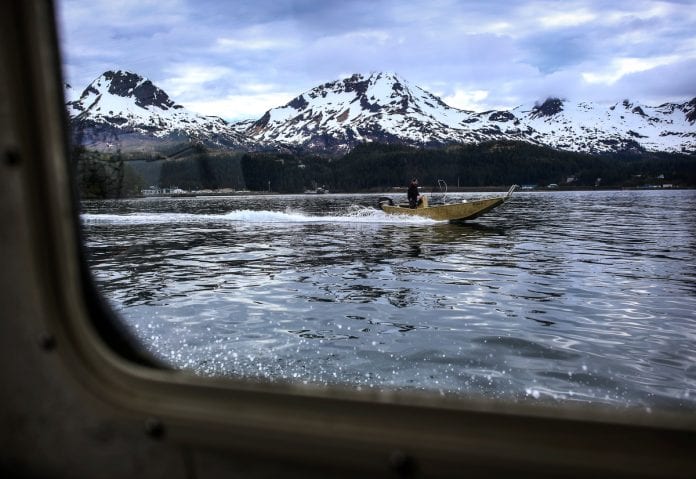
In a 4-3 decision on July 17, the Alaska Board of Fisheries declined to reverse its decision allowing for an increase of 20 million pink salmon eggs to be taken by a private non-profit hatchery in Prince William Sound.
The vote on a petition from the Kenai River Sportfishing Association to stop the Valdez Fishery Development Association from increasing its take of eggs and incubating those eggs at the Solomon Gulch Hatchery to boost the number of humpies available for harvest in Prince William Sound came during a standing room only emergency meeting of the board in Anchorage.
Board members John Jensen, Petersburg; Alan Cain, Anchorage; Robert Ruffner, Soldotna; and Fritz Johnson, Dillingham, voted against the petition, while Israel Payton, Wasilla; Reed Morisky, Fairbanks; and Orville Huntington, Huslia, voted for it.
Hatchery issues are to be taken up again by the board during a work session in Anchorage in October.
KRSA contended in its petition, whose signers included several set netters and one drift gillnetter, that in some streams across Lower Cook Inlet in 2017, up to 70 percent of the pink salmon were releases from Prince William Sound hatcheries. Those hatchery-marked fish were present in every Lower Cook Inlet stream sampled, the petition said.
In addition to the straying issues observed in Lower Cook Inlet, recent scientific publications have provided cause for concern over the biological impacts associated with continued release of very large numbers of hatchery salmon into the North Pacific Ocean, including the Bering Sea and Gulf of Alaska, the petition said.
Reductions in the hatchery program were opposed by the city of Cordova, the Native Village of Eyak and Cordova District Fishermen United.
The city of Cordova on June 27, citing the direct social and economic benefits to commercial and sport fish harvesters, approved a resolution in support of the 20 million pink salmon egg increase
The tribal resolution, approved on July 9, criticized KRSA’s petition as “irresponsible” and for occurring “outside of the open ad participatory process by which this increase was approved and reviewed by the ADFG Regional Planning Team.”
And Jerry McCune, president of CDFU, in his commentary for July 6 edition of The Cordova Times, called for stakeholders to “band together to support sensible habitat protection, sustainable management, and continued research. We can’t afford the distraction of quibbling over a time-tested, well-managed, intensely studied program that feeds thousands of Alaska families,” he wrote.
“It was great to see the majority of the board follow the findings of department scientists,” said Marty Weiser, chief development officer for Copper River Seafoods, one of nearly 200 people from various sectors of the commercial and sport fishing industries packed into the meeting room at the Egan Center in downtown Anchorage. “Straying and decolonization occurs with both hatchery and wild salmon populations and with climate change we will likely see a lot more of this over the coming decades,
“In addition, this subject will be discussed in detail in the October regularly scheduled meeting and the addition of these 20 million pinks will not be significant over one year to be considered an emergency, in my opinion the petition should have never got a meeting in the first place,” Weiser said. “The success of Prince William Sound is reliant on these hatcheries and if the science says we are not damaging wild stocks than we should continue to provide the stability to our fishermen and the market that these hatcheries provide.”














